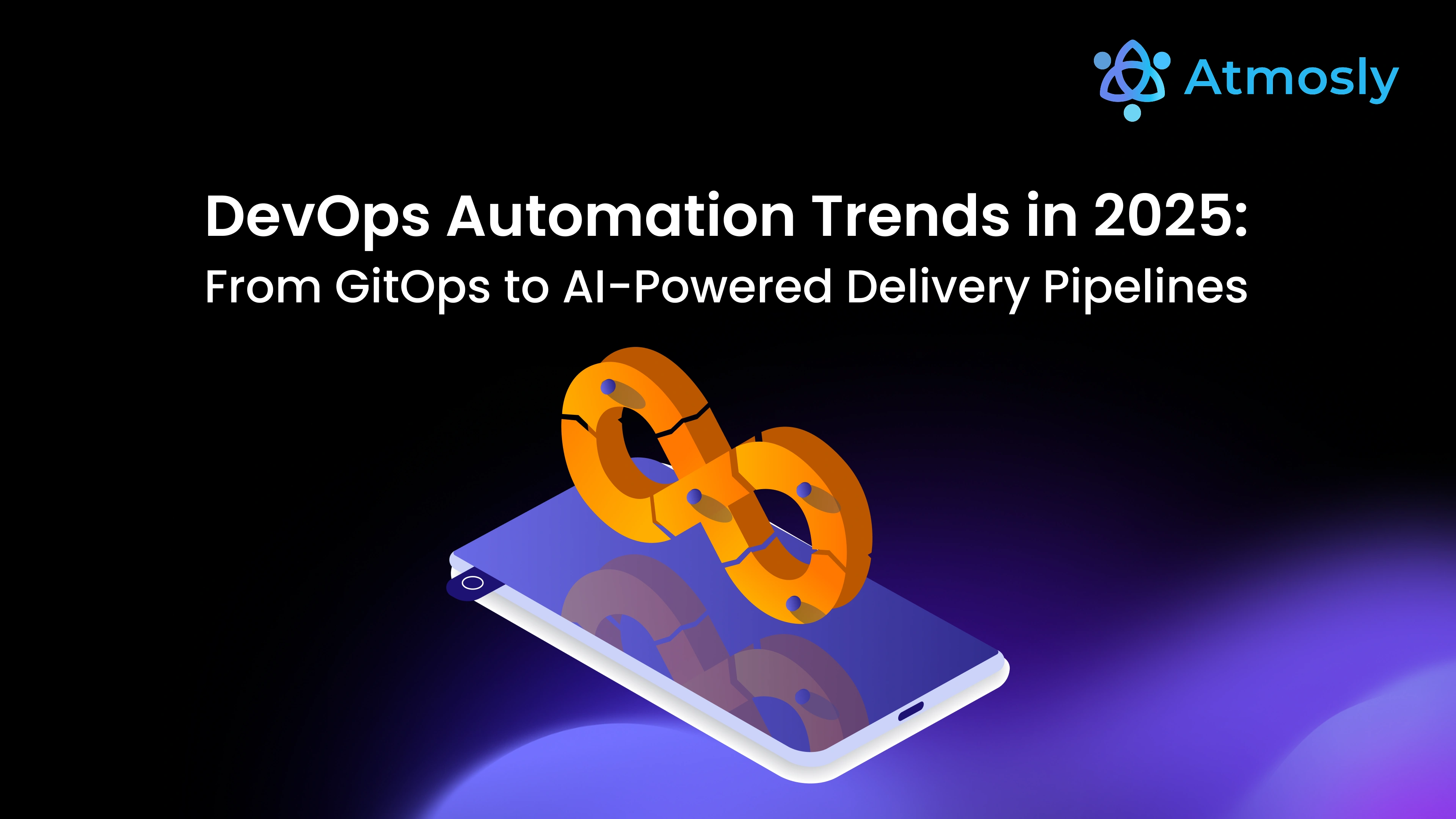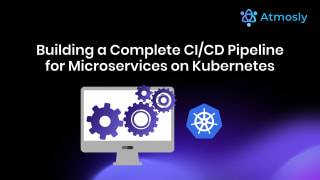In 2025, DevOps automation is entering a new era. The days of managing dozens of disconnected tools, manual configurations, and reactive operations are quickly fading.
Organizations are now adopting automation-first DevOps ecosystems powered by GitOps, AI, and intelligent pipelines that predict issues before they happen.
The focus has shifted from “doing DevOps” to engineering productivity, platform reliability, and data-driven decision-making. In this blog, we’ll explore the top DevOps automation trends for 2025, how they’re transforming software delivery, and what forward-thinking teams are doing to stay ahead.
1. The State of DevOps in 2025
DevOps is no longer just about faster releases it’s about intelligent automation.
Engineering organizations today operate across multi-cloud environments, run hundreds of microservices, and manage infrastructure at a global scale.
Traditional DevOps approaches can’t keep pace with:
- Complex CI/CD pipelines
- Constant security audits
- Cost optimization pressures
- Developer productivity goals
In 2025, the focus is on autonomous DevOps systems that manage themselves through automation, telemetry, and AI.
2. Trend #1: GitOps Becomes the Default Model for Deployment
GitOps the practice of using Git as a single source of truth for infrastructure and application configurations has become the gold standard for modern CI/CD.
Instead of manual commands or UI-based deploys, every change (infrastructure or app) is stored in Git and automatically applied via tools like ArgoCD or Flux.
Why it matters:
- Provides version-controlled deployments
- Enables rollbacks in seconds
- Improves auditability and governance
- Integrates seamlessly with Kubernetes and IaC tools
In 2025, over 70% of Kubernetes-driven teams are using GitOps workflows for production deployments.
3. Trend #2: AI and Machine Learning in DevOps Automation
AI is no longer just a buzzword it’s embedded directly into DevOps workflows.
Machine learning models now help teams analyze logs, detect anomalies, and even predict pipeline failures before they happen.
AI in DevOps is powering:
- Predictive pipeline optimization: AI models forecast build failures and recommend fixes.
- Automated anomaly detection: Tools identify unusual CPU, memory, or latency spikes.
- AI-assisted debugging: Natural language interfaces help engineers diagnose root causes faster.
- AI-powered test selection: Smart systems decide which tests to run, cutting build times.
The result?
Teams spend less time firefighting and more time innovating while maintaining high reliability and speed.
4. Trend #3: Platform Engineering Takes the Spotlight
As DevOps scales, platform engineering has emerged as the next evolution focused on building internal developer platforms (IDPs) that standardize automation, workflows, and developer experience.
Instead of every team managing its own pipelines, a centralized platform provides:
- Golden paths (predefined workflows)
- Reusable CI/CD templates
- Self-service environment provisioning
- Secure access controls
This model reduces friction, ensures governance, and allows teams to move faster with confidence.
In 2025, the line between DevOps and platform engineering continues to blur with both aiming to automate complexity and enable developer self-service.
5. Trend #4: DevSecOps and Policy-as-Code Automation
Security is now baked into pipelines, not bolted on afterward.
Modern DevOps platforms integrate policy-as-code, compliance automation, and secret management directly into CI/CD.
Key innovations in 2025 include:
- Automated vulnerability scanning during builds.
- OPA (Open Policy Agent) for runtime policy enforcement.
- Continuous compliance pipelines that verify configurations automatically.
- Secrets-as-a-Service for secure credentials management.
The result is a shift-left security model, where compliance checks run as part of the delivery process saving teams from costly post-deployment issues.
6. Trend #5: FinOps and Cost-Aware Automation
Cloud spending has become a board-level concern, and DevOps teams are now responsible for cost visibility and efficiency.
FinOps (Financial Operations) is being integrated into DevOps automation to track, optimize, and predict cloud usage.
Modern platforms automatically:
- Right-size workloads based on demand.
- Terminate idle resources.
- Provide cost dashboards for real-time tracking.
- Suggest optimizations via AI models.
By combining DevOps and FinOps, teams ensure performance and efficiency coexist delivering innovation without overspending.
7. Trend #6: Multi-Cloud & Hybrid Automation
Enterprises are increasingly adopting multi-cloud and hybrid models for resilience and flexibility.
In 2025, DevOps automation tools are multi-cloud by design, enabling teams to manage pipelines and infrastructure across AWS, Azure, and GCP through a single control plane.
Key focus areas:
- Cross-cloud deployment orchestration
- Cloud-agnostic IaC modules
- Unified monitoring and policy enforcement
Automation platforms that offer multi-cloud support give organizations the freedom to optimize for performance, cost, or compliance without vendor lock-in.
8. Trend #7: Observability and Feedback-Driven Automation
Automation is only as good as the visibility that powers it.
Modern DevOps automation integrates observability directly into CI/CD pipelines, creating closed feedback loops between development, deployment, and operations.
This means every deployment automatically triggers:
- Metrics collection (via Prometheus or Datadog)
- Log aggregation (via Loki or Elastic Stack)
- Alerting and rollback on threshold breaches
The result is a self-healing DevOps environment, where data continuously drives improvement.
9. Trend #8: Developer Experience (DevEx) Becomes a Key Metric
2025 marks the year DevOps success is measured not just by uptime or speed but by developer experience.
Automation is increasingly used to reduce friction for developers by simplifying environments, improving documentation, and eliminating repetitive tasks.
Platform engineering teams now focus on:
- Reducing time-to-first-deploy
- Providing intuitive self-service portals
- Automating environment setup
- Offering instant feedback and diagnostics
When developers spend more time building and less time waiting, business outcomes improve directly.
10. The Future of DevOps Automation
Looking ahead, DevOps automation will continue evolving toward autonomous systems where AI, observability, and policy-driven automation converge.
Expect to see:
- AI copilots for pipelines and deployments
- Unified multi-cloud control planes
- Predictive remediation and automated incident resolution
- Continuous everything — integration, delivery, verification, and optimization
The future isn’t about replacing engineers it’s about amplifying human capabilities through automation.
Conclusion: Automate Everything, Empower Everyone
In 2025, DevOps automation isn’t just a technology shift it’s a mindset.
From GitOps to AI-driven orchestration, automation allows teams to innovate faster, deploy safer, and operate smarter.
As the landscape evolves, organizations that invest in platform engineering, intelligent pipelines, and developer experience will lead the next decade of digital innovation.
The future of DevOps is autonomous where teams focus on building products, not pipelines. Try Out Atmosly.






